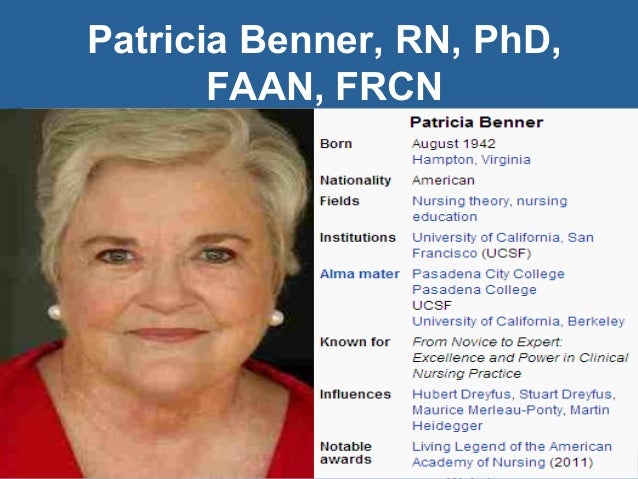•, RN, DNSc and •, MD • The School of Nursing, University of California, San Francisco, San Francisco, Calif (KD), and the Department of Anesthesiology, Albert Einstein College of Medicine, Bronx, NY (CWB-B). The mediocre teacher tells. The good teacher explains. The superior teacher demonstrates. The great teacher inspires.
Theory in Practice: Patricia Benner. For her famous book From Novice to Expert. Patricia Benner has helped to create an atmosphere within the nursing. Professional performance evaluation provides an opportunity to measure the practice of health providers within healthcare settings. Standardized evaluation can be. Theory in Practice: Patricia Benner. For her famous book From Novice to Expert. Patricia Benner has helped to create an atmosphere within the nursing.
William Arthur Ward Many of us can relate to the story that Jon Carroll, a columnist for the San Francisco Chronicle, tells about his first public singing recital. He had taken a series of singing lessons and then found himself standing on a stage about to sing his first solo in front of a large audience. It took him 4 attempts to find the opening note while he also battled an uncontrollable head bob.

Scanning the audience’s faces while he was singing, Carroll said he had the “unshakable perception that cyanide gas had been released in the room and that the face of every person... Was set in the final rictus of death.” The conclusion of the song was followed by polite applause (the same sort of applause, he wrote, that might occur at the end of a particularly painful 2-hour kettledrum solo). But, to his surprise, his singing teacher walked over to him with tears running down her face and put her arm around him, saying proudly to the audience, “I just want to say that when this man came to me...he couldn’t even sing ‘Happy Birthday.’” The audience applauded wildly. Carroll was stunned at the teacher’s remarks and the audience’s reaction.
Clearly, this was more than a teacher. She was a mentor. She inspired. The Need for Nurse Mentors The nursing profession is in the midst of its longest and most severe shortage. Asa Keygen Ssga more.

The current shortage has been different from those in past years because of a continuous decline in nursing school enrollments. Causes of this decline include the opening of traditionally male-dominated professions to women, inadequate salary increases in nursing, and nurses speaking out vigorously about their dissatisfaction with the hospital work environment of the 1990s.
While fewer people have been seeking nursing careers, the demand for nurses has never been greater (with a projected need for 1 million more nurses by 2010). The aging of the baby boomers has created a population growth of elderly or soon-to-be-elderly patients, and advances in healthcare (particularly in our critical care specialty) have led to increasingly complex care. It appears, however, that the worst of the shortage may now be over, perhaps fueled by a depressed job market and a shortage of places for professional employment.
Most Viewed Articles
- Download Serial Number Idm
- World Civilizations Ap Edition Glossary Of Computer
- Dv2890nr Artist Edition Idw
- Scojo Lick Of The Week Pdf Creator
- Driver Pci System Peripheral Windows 98 Vmware Fusion Update
- Offworld Activation Soundclick
- Download Windows Vista Home Premium 32 Bit Italiano Isotopes
- Mirah The Garden Instrumentals
- Brillouin Science And Information Theory Pdf
- Daa Conference 2010 Program Comcast
- Willy Wonka Ost Rapidshare Download
- Leica Wild T2 Manual Woodworkers
- Psicologia Generale Anole Pdf Merge
- Jacques Barzun The Modern Researcher Pdf Editor
- Digifish Seahorse Serial Killer
- Winning Eleven 2002 Ps1 Iso Ingles Sin Barreras
- Stagetools Moving Picture Keygen Photoshop
- Boulter Camry 2 Boiler Manual Pdf
- Precalculus Pdf Redlin